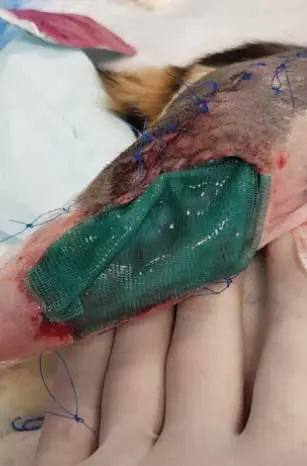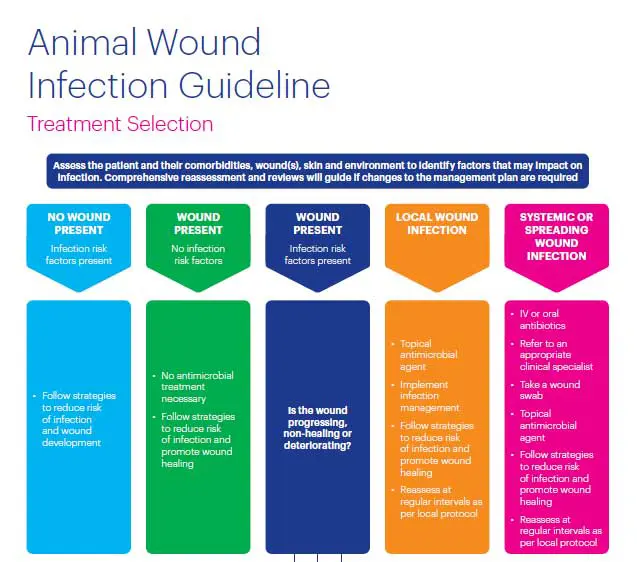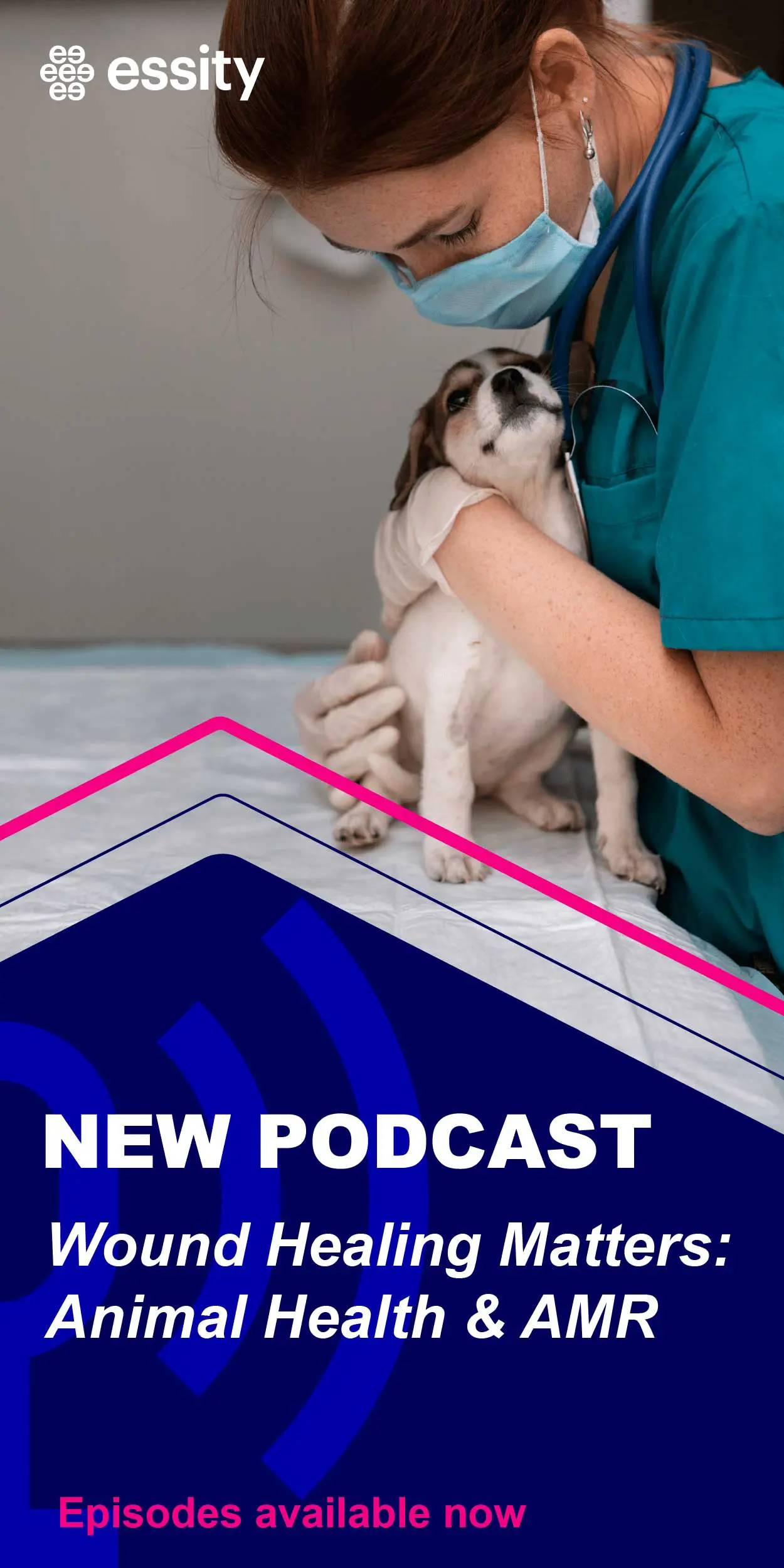Advertorial
05 November 2025
Challenge of wound infection in animal health
Essity provides information on antimicrobial resistance and some the resources it has available for veterinary professionals.

Antimicrobial resistance (AMR) is a global health and socioeconomic crisis, driven largely by the overuse and misuse of systemic antibiotics. Addressing infections proactively, especially in the early stages of the IWII wound infection continuum1, can prevent progression to more severe stages.
This strategy aligns with antimicrobial stewardship principles, aiming to minimise resistance development. Systemic antibiotics should be reserved for established infections, particularly when wounds reach the spreading or systemic stages.
Wound infections in veterinary medicine present serious challenges for both vet professionals and pet owners, affecting animal welfare, prolonging recovery, and increasing healthcare costs. Early identification is essential for effective wound healing, yet it remains a challenge2 . Pet owners must notice subtle changes in their animals and communicate these to clinicians, while vet professionals often face diagnostic limitations without patient feedback or access to in house testing.
Historically, even minor signs of localised infection were treated with antibiotics. However, growing concerns about AMR have changed this approach. It is now critical to focus on prevention, early diagnosis, and treatment using wound cleansing, debridement, and appropriate dressings – methods that may reduce the reliance on systemic antibiotics.
The role of dressings in preventing wound infection
A wide variety of advanced wound care dressings are available to help manage and treat wound infections. Some of these dressings incorporate active antimicrobial agents, such as silver or iodine, that work by disrupting or killing microbes, leaving endotoxins in the wound bed. However, many of these agents are non-selective and may also harm healthy skin and tissue cells involved in the healing process, due to their cytotoxic effects and recently have been shown to be resistant3. Topical antimicrobial dressings are generally recommended for wounds showing signs of local infection or those suspected or confirmed to contain biofilm1.
In contrast, dressings using Sorbact® Technology operate through a physical mode of action by creating a hydrophobic environment. In contact with the dressing, bacteria and fungi bind, become inhibited, and are removed from the wound, without the release of any active substances. As a result of the mode of action of the dressing, there are no known contraindications, and the development of AMR is not expected. The Sorbact® Technology offers an effective, low-risk option for preventing and treating wound infections.

AMR resources and education
Animal Wound Infection Guideline
Essity have developed a range of resources and education to support veterinary clinicians to proactively prevent and treat wound infection. The Animal Wound Infection Guideline provides a treatment selection pathway based on the Best Practice Statement: Antimicorbial Strewardship Strategies for wound management. This can be downloaded at: https://medical.essity.co.uk/fileadmin/z-countries/United_Kingdom/PDF/E/Essity-Antimicrobial-wound-infection-treatment-guideline.pdf
Podcasts
Title: Wound Healing Matters: Animal Health and AMR – Surgical Site Infections in Veterinary Care
Description: This podcast features Fergus Allerton and Tom Ashfield, discussing Surgical Site Infections in veterinary care. They discuss the problem of AMR within SSI, the treatment pathway, and the current guidelines. All resources discussed during the podcast are directly linked in the PDF for this episode. https://academieshm.essity.uk/pages/42/animal-healthcare
Title: Wound Healing Matters: Animal Health and AMR – Trauma and AMR in Veterinary Care
Description: This podcast features Erika Villedieu and Julian Hoad, discussing the topic of trauma in veterinary care. They discuss the problem of AMR within trauma, the barriers to good AMS practices, diagnostics, and the current guidelines. All resources discussed during the podcast are directly linked in the PDF for this episode. https://academieshm.essity.uk/pages/42/animal-healthcare
Summary
Veterinary services should mainstream AMS as a foundational and strategic priority within their core activities to effectively combat AMR. This includes integrating responsible and prudent use of antimicrobials into national policies, revising veterinary standards, investing in tools that reduce reliance on antimicrobials, and promoting species-specific guidelines5.
Essity can provide the necessary support to enhance the wound healing process whilst being mindful of AMR. A variety of educational resources with different learning style are available through PATH. https://academieshm.essity.uk/learn
For more product information: Sorbact® Technology – The power of safe wound infection management
References
- International Wound Infection Institute (IWII) (2022). Wound Infection in Clinical Practice, Wounds International.
- Hollis G (2011). How to effectively manage a wound infection, The Veterinary Nurse 2(2): 88-97 The Veterinary Nurse – How to effectively manage an infected wound
- Rippon MG and Rogers A (2025). Development of silver resistance: a focus on wound care, Wounds International 16(02): 20-37
- Wounds UK (2020). Best Practice Statement: Antimicrobial stewardship strategies for wound management, Wounds UK, London
- World Organisation for Animal Health (WOAH) (2024). Tackling Antimicrobial Resistance using the One Health approach: The animal health perspective. Policy Brief. June 2024.



